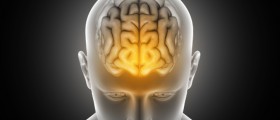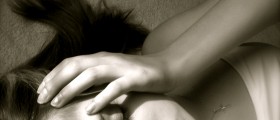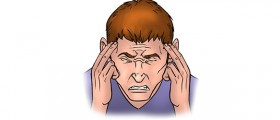
Migraine is a common type of headache that affects about 1 in 5 women and 1 in 15 men in North America. Migraine attacks can be of different severity and frequency but migraines that occur for 15 days of more are considered as chronic. Migraines are marked by intense throbbing pain on one side of the head and other bothersome symptoms.
Migraine AttackMigraine attack has five phases although some people do not go through every phase but experience the same phase during each attack.
Many people experience the prodrome phase which is, after several hours or days, followed by the headache phase. This phase is accompanied with significant mood change, sensitivity to light and noise, nausea, diarrhea, loss of appetite and muscle pain.
The next phase, known as aura phase affects about 20% of sufferers. Migraines with an aura are called classic migraines while those without an aura are known as common migraines. The aura phase is featured by vision disturbances such as flashing lights, tunnel vision, dazzling zigzag lines and blurred, cloudy or shimmering vision. Tingling sensation on one side of the body, auditory or olfactory hallucinations, vertigo and hypersensitivity to touch are also common.
The aura phase precedes the pain or headache phase marked by excruciating head pain. The pain is throbbing and affects only one side of the head. Other accompanying symptoms include nausea and vomiting, extreme sensitivity to lights, sounds, smells and touch. Abdominal pain, diarrhea, trembling, cold sweats and poor balance may be also present. Physical activity usually aggravates the migraine pain.
The resolution phase refers to a period of several hours when the head pain slowly subsides.
The postdrome phase also called the migraine hangover phase can last up to several days. In this phase the sufferer experiences tiredness, irritability, queasy stomach, sore muscles and difficulty in concentrating.
Treatment for Migraine Headache
There is no cure for migraines but the treatment is designed to alleviate the symptoms of migraine attacks. Prevention of the attacks is equally vital. Each migraine victim should recognize the triggers of his/her condition and try to eliminate them.
Migraines are commonly treated with medications called triptans that are used to stop a migraine attack when the headache phase starts. Triptans act by stimulating serotonin to reduce inflammation and constrict blood vessels.
Although triptans successfully treat migraine symptoms in most of the patients, they are not effective in case of severe migraines. Also, triptans entail some serious side effects and their frequent use can cause so-called rebound headaches that occur after the medication has worn off.
Aromatherapy for Migraine Headache
Alternative therapies such as aromatherapy provide an excellent complementary therapy for migraine. Aromatherapy can considerably reduce the pain and nausea although people who suffer from acute sensitivity to smells and touch cannot use it.
There are many essential oils that can be used for pain relief but peppermint oil is the best. This oil has analgesic property equal to acetaminophen. Apart from the pain, it helps with the nausea and can be taken in combination with prescription medications.
A few drops of peppermint oil can be diluted with carrier oil like jojoba or almond oil and applied to the temples, forehead and back of the neck. Peppermint oil can be also inhaled to relieve migraine.
Ginger essential oil can provide nausea relief and many migraine victims consider it as helpful during migraine attacks.
Lavender, Rosemary, Roman Chamomile, Marjoram and Neroli essential oils can be also used in aromatherapy treatment for migraine.














Your thoughts on this
Loading...